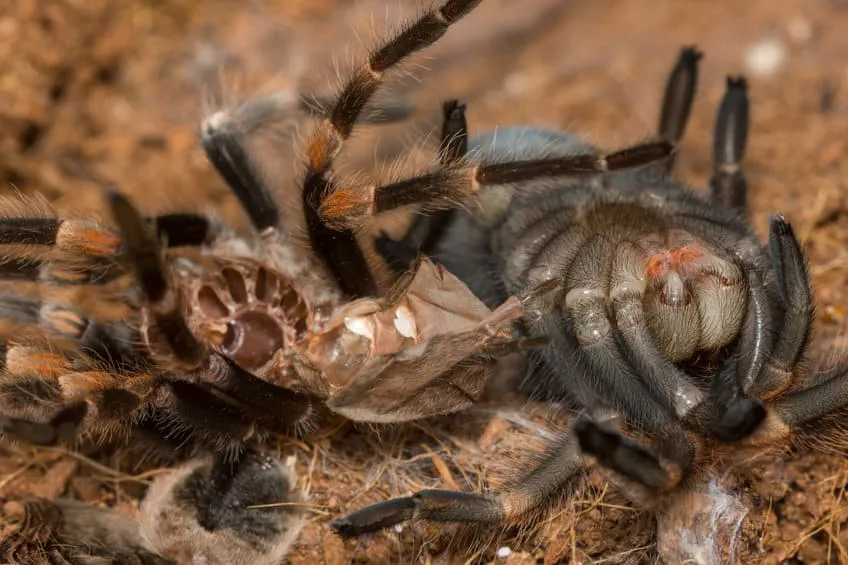What is Tarantula Molting?
Tarantula molting is a natural and essential process for these fascinating creatures, allowing them to grow and replace their exoskeleton. It’s the shedding of their outer layer, a process that unveils a new, larger, and often more vibrant version of the tarantula. This process is not merely about growth, it’s a complete rejuvenation, replacing not only the hard outer shell but also internal linings and even lost limbs. For a tarantula owner, understanding molting is vital for providing proper care and ensuring the well-being of your pet. The frequency of molting varies depending on the tarantula’s age, species, and environmental conditions, with younger tarantulas molting more frequently than adults. This intricate process is a testament to the resilience and adaptability of these amazing arachnids. Recognizing the signs and knowing how to support your tarantula during this period is crucial to their health.
The Molting Process
The molting process is a remarkable feat of nature. It begins with the formation of a new exoskeleton underneath the old one. As the process starts, the tarantula will detach itself from the old exoskeleton. This can take several hours, or even days, depending on the size and health of the tarantula. The tarantula will then turn on its back, a vulnerable position, and with a series of contractions, it wriggles out of its old shell. The new exoskeleton is soft and pliable at first, gradually hardening over the following days or weeks. During this vulnerable period, tarantulas are defenseless, making them extremely susceptible to harm. This is why it’s crucial to avoid disturbing them and maintain a stable, safe environment during the process. The tarantula will inflate itself with hemolymph (spider ‘blood’) to split the old exoskeleton and slide out. This process requires a lot of energy and can be quite stressful for the tarantula.
Pre-Molting Signs
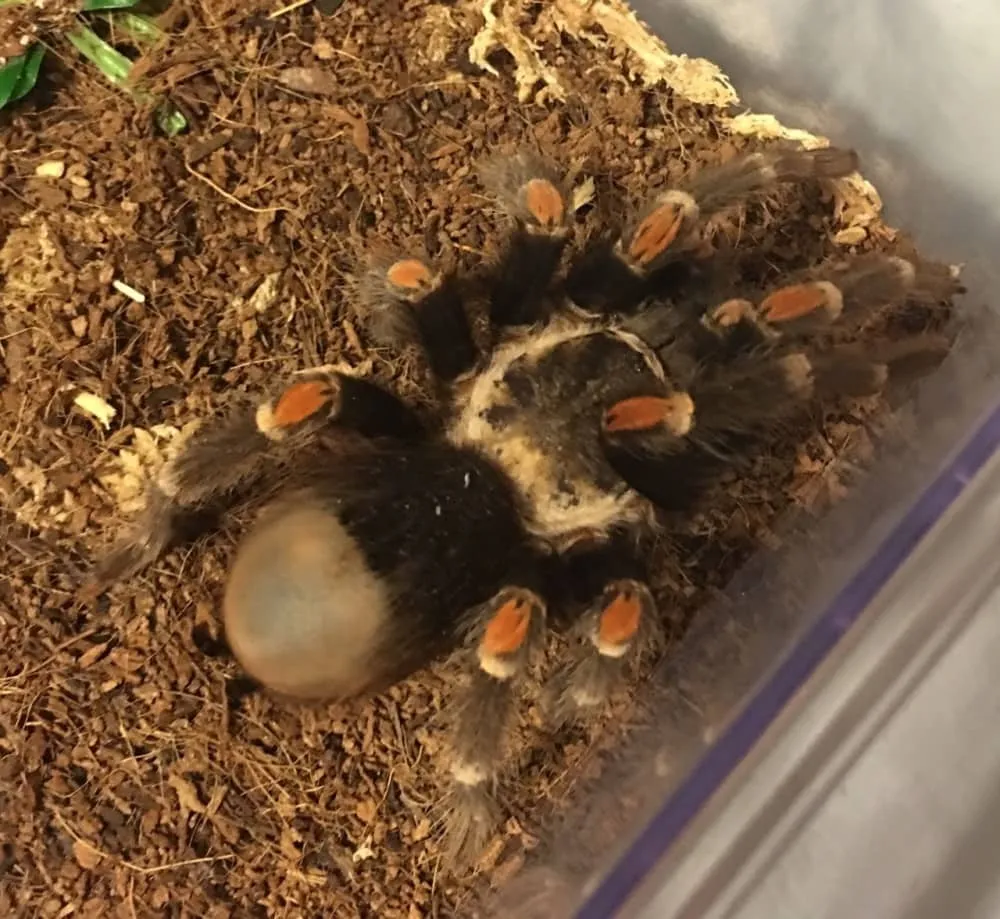
Recognizing the signs of an impending molt is crucial for tarantula owners. Understanding these pre-molting indicators allows you to prepare the enclosure, provide a stress-free environment, and ensure the best possible outcome. Being observant and knowing what to look for can significantly contribute to your tarantula’s well-being and reduce the risk of complications during this vital process. The pre-molt phase often lasts for several weeks, giving you ample time to adjust your care routine. Paying close attention to your tarantula’s behavior and physical appearance will help you anticipate the molt and support your pet through this transformative event. This anticipation allows you to prepare and minimize any potential disturbances that could affect the molting process.
Color Change
One of the most noticeable signs of an upcoming molt is a change in the tarantula’s coloration. The vibrant colors of the tarantula may appear dull or faded. This is because the new exoskeleton is forming underneath, and the colors haven’t yet fully developed. In some species, the tarantula might appear darker overall. The old exoskeleton may start to look dry and dull. The dulling of the colors is a clear indicator that the molting process is about to begin. It’s a visual cue that signals the internal preparations for shedding the old shell. This color shift serves as a reliable clue for pet owners, allowing them to prepare for the subsequent stages of molting.
Lethargy
Lethargy is another common sign that your tarantula is preparing to molt. The tarantula will become less active than usual, spending more time hiding or resting. You may notice a decrease in its movements and a general lack of interest in its surroundings. The tarantula may seem sluggish and less responsive to stimuli. This lethargy is due to the tarantula conserving energy for the molting process. By reducing their activity level, they conserve the necessary resources for the demanding process ahead. Providing a quiet and undisturbed environment is essential to support your tarantula during this time. Any extra energy expenditure can be taxing, so rest is key. This pre-molt inactivity is a vital part of their preparation.
Refusal to Eat
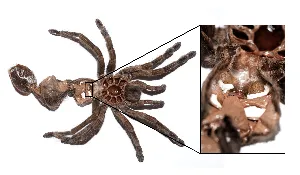
A significant indicator that your tarantula is preparing to molt is the refusal to eat. This is a common behavior change observed in tarantulas. They will often stop eating several weeks before molting. This is because the tarantula’s appetite decreases, and they are preparing for the physical demands of the molt. The tarantula may ignore or actively avoid food that is offered. It’s important not to force-feed your tarantula during this period, as it can stress the animal. It is common and normal and should not be a cause for concern. Continue to offer food, but remove it after a day if it is not eaten, as uneaten food can lead to mold and mites in the enclosure. The appetite will return after the molt.
Abdomen Appearance
The appearance of the tarantula’s abdomen can also indicate an impending molt. The abdomen may appear darker, larger, and more swollen. This is because the new exoskeleton is forming underneath, and the tarantula is preparing to shed the old one. You might also notice that the hairs on the abdomen appear to be thinning or less vibrant. The swollen abdomen is a result of the tarantula absorbing water in preparation for the molt, which helps to separate the old exoskeleton. This is a sign that the molting process is well underway. Any changes in the overall appearance of the abdomen should be noted as part of assessing the tarantula’s molting preparations.
During Molting
During the molting process, it’s critical to avoid disturbing your tarantula. The tarantula is extremely vulnerable during this time, and any disturbance can be detrimental. Do not attempt to handle or interact with your tarantula while it is molting. The molting process can take anywhere from a few minutes to several hours, depending on the size and age of the tarantula. Keep the enclosure in a quiet location with stable humidity. Ensure the enclosure is free from any potential hazards. The tarantula will typically lie on its back to molt. It is crucial not to interfere with the process or attempt to assist your tarantula. If you notice any issues or signs of distress, contact an experienced tarantula keeper or a veterinarian specializing in exotic animals. The goal is to create a safe and undisturbed environment during this sensitive period. This is the time to allow nature to take its course.
Post-Molting Care
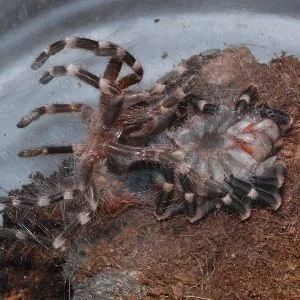
Once the molting process is complete, it’s important to provide appropriate care to support your tarantula’s recovery and well-being. The new exoskeleton will be soft and vulnerable for a few days or even weeks, depending on the species and environmental conditions. During this period, it is crucial to provide a safe and supportive environment to allow the exoskeleton to harden fully. This period will also allow the tarantula to replenish energy levels and rehydrate. Proper post-molt care contributes significantly to the tarantula’s health and longevity. It helps the tarantula to regain strength and resume normal activities. The right care will minimize the risk of issues.
Rehydration
After molting, it’s important to provide fresh water for your tarantula. The tarantula will need to rehydrate after the strenuous molting process. Ensure that your tarantula has access to a shallow water dish filled with fresh water. Monitor the water dish and refill it as needed. Some tarantulas may also drink from a damp substrate, particularly after molting. Maintain the correct humidity level in the enclosure to aid in rehydration. Proper hydration is crucial for your tarantula’s recovery and overall health after the molt. This will support the hardening of the new exoskeleton and the tarantula’s recovery.
Feeding
After the molt, it is best to wait a few days before offering your tarantula food. This allows time for the new exoskeleton to harden. Start with small, easily digestible prey items. Overfeeding can put stress on the tarantula during this time. Offer food and remove it if it is not eaten within a day. Your tarantula’s appetite will gradually return to normal. Make sure to adjust the feeding schedule to the tarantula’s age and growth stage. The proper nutrition is essential for their health and growth. After the molting process, a well-fed tarantula will be able to build up its energy levels.
Common Issues During Molting
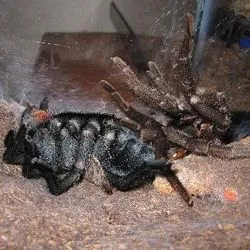
While molting is a natural process, several issues can arise. Recognizing these potential problems allows you to take appropriate measures to ensure your tarantula’s safety and well-being. Understanding these common issues and knowing how to respond to them is key to being a responsible tarantula owner. Early detection and intervention can often prevent severe complications and contribute to the overall health and lifespan of your tarantula. It’s crucial to know what to do if something goes wrong. This knowledge will enable you to handle any issues promptly.
Stuck Molt
A stuck molt is a serious issue that occurs when the tarantula struggles to shed its old exoskeleton. This can be caused by low humidity, dehydration, or other environmental factors. If the tarantula is unable to fully shed its exoskeleton, it can lead to various health problems. This can range from physical deformities to infections. If you suspect your tarantula has a stuck molt, carefully assess the situation. If the molt is partially shed, try gently increasing humidity in the enclosure. Do not attempt to forcibly remove the old exoskeleton, as this could severely injure your tarantula. In severe cases, consult a veterinarian experienced with tarantulas. Prompt intervention is critical. A stuck molt, left untreated, can be fatal.
Dehydration
Dehydration can hinder the molting process and lead to serious complications. Low humidity levels and inadequate access to fresh water are common causes of dehydration. A dehydrated tarantula may struggle to separate from its old exoskeleton. It can also lead to other health problems. Providing a shallow water dish with fresh water is essential. Regularly misting the enclosure can help maintain appropriate humidity levels. Observe the tarantula for signs of dehydration, such as a wrinkled abdomen. If you suspect your tarantula is dehydrated, increase humidity and ensure access to water. Prevention is key. Regular monitoring and proactive care are crucial to prevent dehydration.
Importance of Humidity
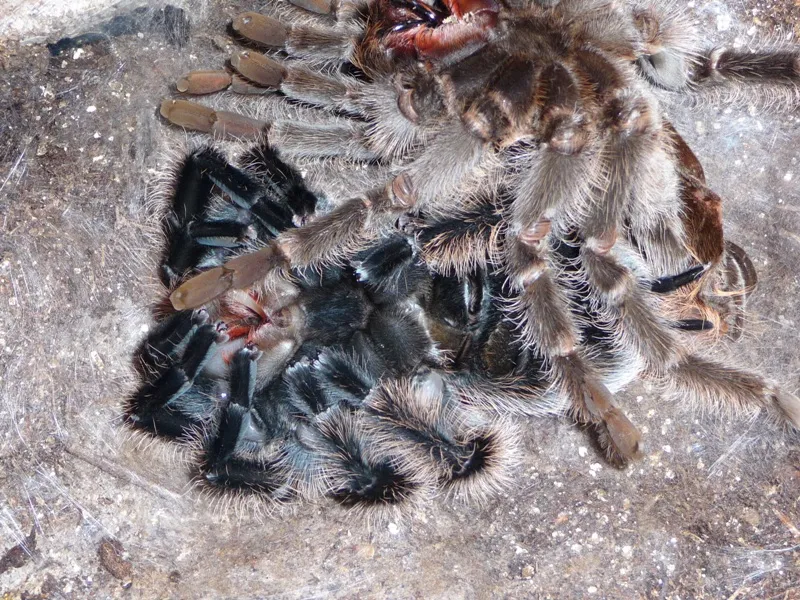
Maintaining the correct humidity level is crucial for a successful molt. Adequate humidity helps the tarantula to separate from its old exoskeleton. It softens the old shell, making it easier for the tarantula to shed. Inadequate humidity can lead to a stuck molt, which can be life-threatening. Use a hygrometer to monitor humidity levels in the enclosure. The appropriate humidity level varies depending on the tarantula species. Provide a water dish and mist the enclosure as needed to maintain the proper humidity. Proper humidity levels are essential for your tarantula’s health and well-being. Humidity plays a crucial role in the molting process. Maintaining the proper humidity levels ensures the molting goes smoothly. The correct humidity creates an environment in which the molting can occur without any problems.
Conclusion
Molting is a fascinating and vital process for tarantulas. Understanding the signs, process, and the care requirements during and after the molt is essential for any tarantula owner. By providing a safe and stable environment, you can significantly contribute to your tarantula’s health and longevity. Careful observation, proper husbandry, and a little knowledge can go a long way in ensuring your tarantula’s well-being. Remember that patience and a proactive approach are crucial for successful molting. Understanding tarantula molting gives you the ability to provide a thriving and fulfilling life for these amazing creatures. Enjoy the transformation and the opportunity to witness this amazing process. Now that you know all about tarantula molting, you can ensure that your pet lives a healthy life.
